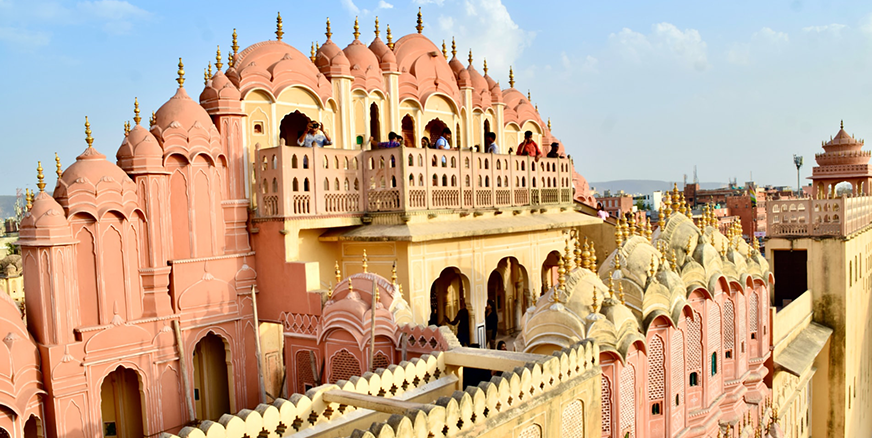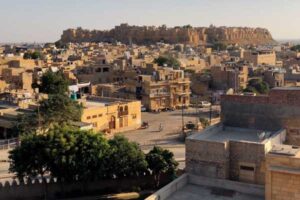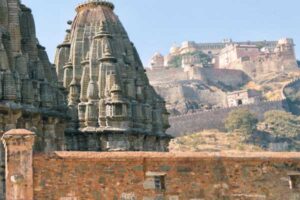Hawa Mahal
Hawa Mahal Jaipur
The intricate patterns that decorate Jaipur’s Hawa Mahal become evident as the day breaks. While hundreds of pigeons crowd the large windows of a building in Badi Choupad in the Pink City, the building nonetheless exudes an air of beauty. The Hawa Mahal has been one of India’s top tourist attractions since the 1970s, when it was opened to the public. Because of its intricate carvings and refined design, it was once hailed as one of the world’s finest pieces of art.
Since it was built one stone at a time by skilled artisans, it exudes a unique allure that cannot be found in any other structure in the contemporary world. We’ve moved beyond just appreciating the building to doing a thorough analysis of the patterns it contains thanks to the structure’s magnificent design, which harkens back to a bygone era.
The Hawa Mahal Jaipur is a building in Jaipur, India, that is well-known for its honeycomb-style windows. Visitors from all around the globe have flocked to see this landmark for decades. Is there anything special about the Hawa Mahal that sets it apart?
COST EFFICIENT SERVICES
Provide highly efficient services at very competitive prices.
ATTRACTIVE PACKAGES
Exclusively customized packages for Rajasthan & India tours.
CAR RENTAL SERVICES
Hire a taxicab in Jaipur for local sightseeing and outstation needs.
100% SATISFACTION
Our company provides 100% customer satisfaction as it is our top priority.
24+ Year
Experience
20+ Tour
Destinations
15000 + Happy
Customers
Overview Of Hawa Mahal
One of the most magnificent structures in the whole world is the Hawa Mahal in Jaipur. It seems to be the same crown that Krishna wore, therefore it must be nice! The monument, boldly displays the name of the city. But the city is also famous as the Pink City, was full of red and pink sandstone. It is located in the heart of Jaipur’s old bazaar.
The rear of the palace, which Lal Chand Ustad constructed to fit in with the city, is now being mistaken for the palace’s front due to all of his efforts. The Hawa Mahal, which is a part of India’s City Palace, is a well-liked tourist destination. It also has the name “The Palace of Winds.” You will need to look about until you discover a gate. this gate opens since there is no direct entrance to the mahal from the street. There are five storeys altogether, each of which has carefull construction.
953 ‘jharokhas’ have been erected all over the palace to let in fresh air and keep it cool during the sweltering summer months. You may discover all the authentic souvenirs connected with Jaipur’s culture and history at the traditional markets that surround you while you’re there. So, you might go to the castle first and then indulge in some retail therapy. The Hawa Mahal will illuminate in a spectrum of hues at sunset if you stay for it. Spend the evening perusing the market for genuine items.
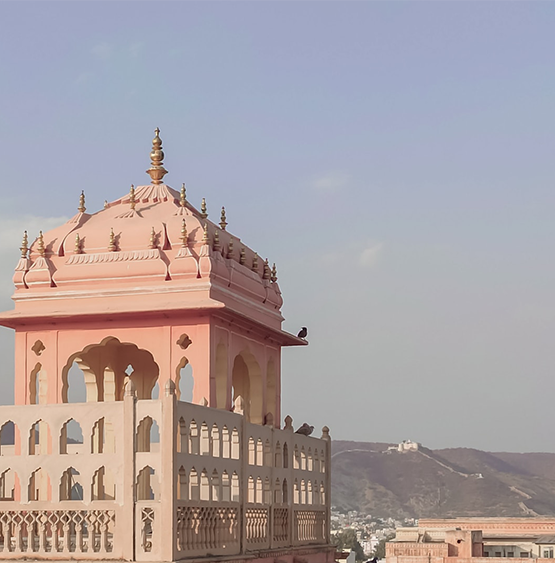
History Of Hawa Mahal
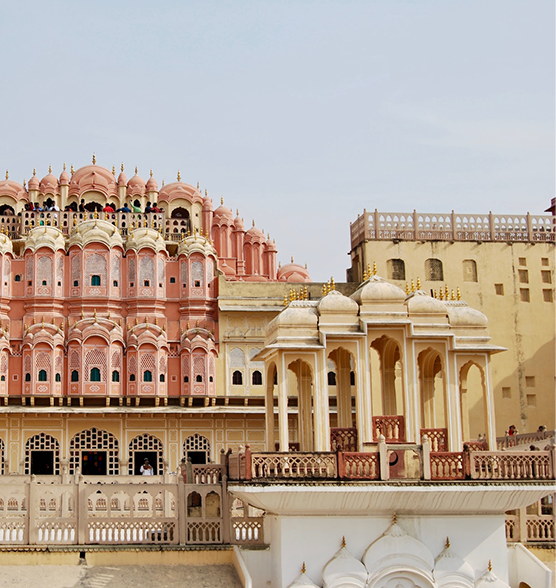
If you go back through architectural and historical records, you’ll see that the monument has had many different meanings throughout the years.Hawa Mahal, also known as “The Palace of Winds,” was built in 1799 and is famous for the 953 ornate windows that line its outside walls. These windows are also known as jharokhas. In order to allow for a free flow of air throughout the palace during the hot summer months, the stunning red and pink sandstone windows feature apertures that are properly planned.
King Sawai Pratap Singh of the Kacchwaha Rajputs, grandson of Maharaja Sawai Jai, commissioned architect Lal Chand Ustad to add a perfectly straight wing to the existing Royal City Palace. The Purdah system is an integral part of Rajput tradition, and its strict observance is reflected in this spectacular women-only castle. This was done to accommodate His Majesty’s wishes.The Palace begins just beyond the main gates of Jaipur’s City Palace and continues all the way to the Zenana, or women’s residences.
The Rajput legal code strictly forbade the Royal Ladies from interacting with the general public or anybody outside of their close families. Thanks to the help they received from this palace, the ladies could see the royal processions without being noticed. It’s worth noting that the women could observe the events unfolding around them without having to strike up conversations with strangers.
What To See

Because of the expert merging of Hindu Rajput and Islamic Mughal traditions that gave the Hawa Mahal its particular appearance, it is an outstanding building.The palace’s interior is full of a mix of white marble and red and pink sandstone. Visitors often believe they have reached the palace’s entrance since the palace seems so majestic from the street.Since it is a continuation of the main City Palace, this side of the palace is the rear. The five floors of the building are covered with latticework and 953 jharokhas. We can regulate the temperature of the air entering the palace by using the concepts of the Venturi effect.
This resulted in the Hawa Mahal being able to maintain its serene and lovely atmosphere constantly, making it comfortable for royal ladies to remain here even on the hottest of days. To escape the heat, the whole royal family used to spend the summers here. This ancient structure that resembles a honeycomb plays a significant role in the architecture and culture of the area.
Architecture Of Hawa Mahal
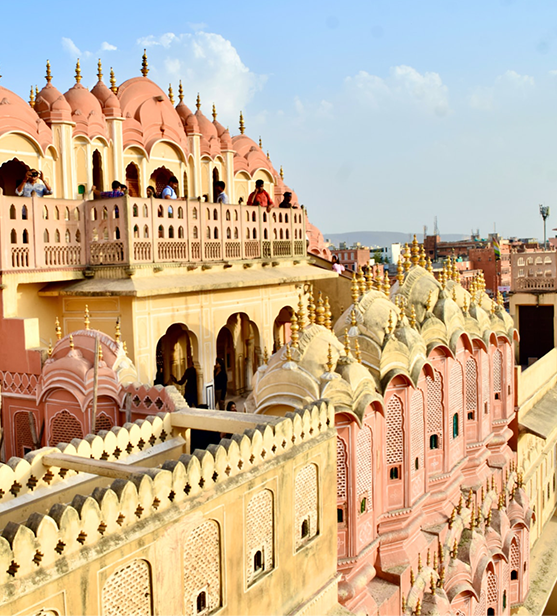
A large number of historians and architects all over the world continue to praise the building to this day, in large part due to its innovative cooling system that was based on the Venturi effect. Each area has a fountain in the center, which helps to cool the air and makes it more obvious. This makes it a fantastic place to spend the weekend if you’re looking to escape the heat during the summer months in Rajasthan.This pyramid-shaped structure, which is around 50 feet in height and has five stories, is a fusion of the best features of Rajput style building and Islamic Mughlai architecture.
Awnings with arches, floral patterns, grooved columns, and even lotuses are all integral parts of the Rajput style of architecture. The Hawa Mahal is a must-see on any trip to Jaipur, and our all-inclusive tour packages make it easy to fit it in. Intricate lattice inlay work and arches that are strikingly similar to the Panch Mahal at Fatehpur Sikri are two obvious indicators of Islamic influence.The palace is an enlarged portion of a larger complex; it includes vaulted ceilings, screens cut from stone, and small windows.
The upper floors of the palace are connected by ramps designed specifically for the royal women’s palanquin or “litter for transport.” These escalators go to the palace’s higher levels.Although the architectural style and craftsmanship are outstanding, the inside of the palace is much less elaborate than the outside.The best view of Jaipur can be had from the palace, so they say.
Basically, the uniqueness of the Hawa Mahal in Jaipur is what brings in millions of tourists every year. These people go all the way to Jaipur only to gawk at one of the most impressive structures of the 18th century.
Located in the very heart of the courtyard, this “Palace of Wind” also houses an archaeological museum that carefully preserves the numerous artefacts that were unearthed in Jaipur. If you want to know what it was like to be a member of the Royal Family, all you have to do is take a tour around the museum.
The Ratan Mahal’s upper-level windows, which come in a rainbow of colours, are made of elaborate glasswork. Because of the abundance of natural light brought in by these magnificent windows, the whole space sparkles like a chandelier is suspended in the ceiling. Unmistakable evidence of expert craftsmanship.Some of the Jharokhas are made of wood, making them a great inspiration for architecture buffs interested in the finer points of creative craftsmanship. Since there are no stairwells on the upper two floors, the only option for getting about is to use one of the ramps.
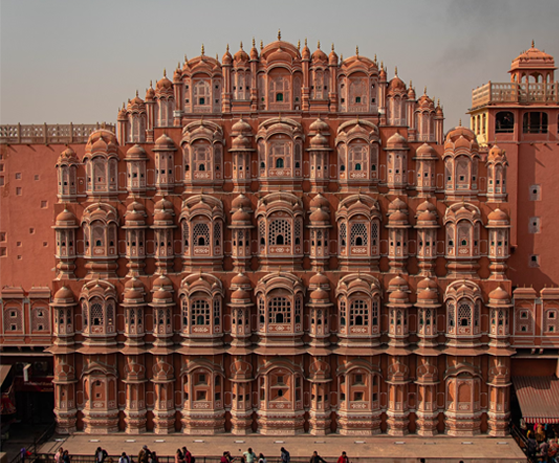
How To Reach
The magnificent Hawa Mahal is just 12.4 kilometres away from Jaipur’s international airport. You may locate taxi stalls outside the terminal’s exit to hitch a ride to the palace. The cheapest route to the airport is a short walk from a local bus stop.
Places To Visit Near Hawa Mahal
After taking in the Hawa Mahal’s rich history and stunning architecture, it’s time to explore the neighbourhoods just beyond its walls. The Palace is one among the few nearby sites that can compete with the Hawa Mahal for awe and wonder.
Govind Devji Temple
Located around 700 yards from the Hawa Mahal, this temple is devoted to the Hindu god Krishna. Hundreds of worshippers go up every day to take part in the temple’s daily Aartis (prayer services). There are shoe racks, parking spots, and water fountains available, and there is a reverent vibe that permeates the area during prayers.
Chandra Mahal
Since this area of the City Palace is still used as living quarters by the Royal Family, it is off-limits to the general public. Maharaja Jai Singh II had the palace built, and it is today preserved as a historical site. It is open to the public every day from 9:30 AM to 5 PM and is located around 200 metres from the Hawa Mahal.
City Palace of Jaipur
Tourists go from far and wide to visit the City Palace in Jaipur because of its spectacular design and exceptional craftsmanship. It occupies around a sixth of Jaipur. The incredible synthesis of several architectural styles will make your jaw drop. It is located a short distance from the Hawa Mahal, at 800 yards distant.
Best Time To Visit
The Hawa Mahal most often becomes subject to visit between the months of October and March, according to consensus. The weather in Jaipur will become noticeably more comfortable once this season actually comes as opposed to the normally sweltering summer months. You may avoid being angry or thirsty by taking in the city’s attractions.
